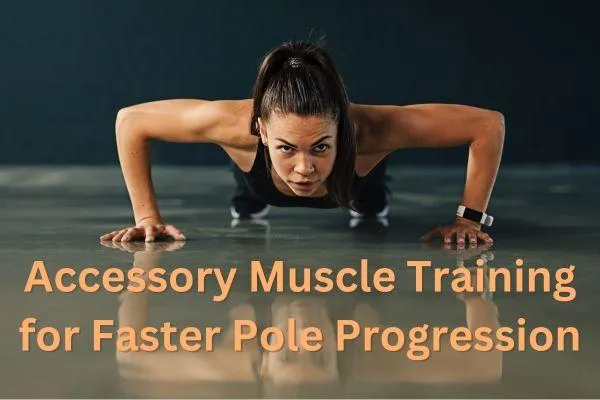
How To: Progress Faster in Pole by Strengthening Accessory Muscles
Pole dancing is an incredible full-body workout that combines strength, flexibility, and artistry. While the primary muscles used in pole dancing are often the focus, training the accessory muscles is equally important for enhancing performance, preventing injuries, and achieving those advanced moves more quickly. In this blog post, we will explore the essential accessory muscles to train, why training them is beneficial, and provide a list of exercises that can be done at home without a pole.
Key Accessory Muscles for Pole Dancing
1. Rotator Cuff Muscles: These muscles stabilize the shoulder joint, crucial for any overhead movements and tricks.
2. Scapular Stabilizers: Including the serratus anterior and lower trapezius, these muscles support shoulder stability and improve grip strength.
3. Forearms and Grip Muscles: Strong forearms and grip are vital for maintaining a secure hold on the pole.
4. Core Muscles: While often considered primary, the deeper core muscles (transverse abdominis and obliques) are essential for stability and control.
5. Hip Flexors and Extensors: These muscles support leg lifts, splits, and overall lower body strength.
6. Glutes: Strong glutes aid in climbing, inverts, and providing overall lower body power.
7. Hamstrings: Flexible and strong hamstrings support leg grips and help prevent injuries during splits.
Why Training These Muscles Matters
1. Enhanced Stability and Control: Strong accessory muscles provide the stability needed for complex moves, reducing the risk of injury and allowing for smoother transitions.
2. Increased Grip Strength: Training the forearms and grip muscles enhances your ability to hold on to the pole for longer durations, crucial for advanced tricks.
3. Improved Core Strength: A strong core supports almost every movement in pole dancing, from spins to inversions, ensuring better control and balance.
4. Better Flexibility and Range of Motion: Strengthening and stretching the hip flexors, glutes, and hamstrings improve your overall flexibility, allowing for more dynamic and graceful movements.
5. Faster Progression: Targeted training of accessory muscles accelerates your ability to master new tricks and combinations by providing a solid foundation of strength and stability.
At-Home Exercises for Accessory Muscle Training
Here are some effective exercises that can be performed at home without a pole to strengthen the accessory muscles essential for pole dancing:
1. Rotator Cuff Strengthening:
External Rotations: Use a resistance band to perform external rotations, keeping your elbow close to your side.
Scapular Wall Slides: Stand against a wall and slide your arms up and down, focusing on squeezing the shoulder blades together.
2. Scapular Stabilizers:
Scapular Push-Ups: In a plank position, focus on moving your shoulder blades together and apart without bending your elbows.
Band Pull-Aparts: Hold a resistance band in front of you and pull it apart, squeezing your shoulder blades together.
3. Forearms and Grip:
Farmer’s Walk: Hold a weight in each hand and walk around, maintaining a strong grip.
Towel Pulls: Hang a towel over a sturdy bar and perform pull-ups, gripping the towel instead of the bar.
4. Core Strength:
Plank Variations: Perform standard, side, and reverse planks to engage different parts of the core.
Hollow Body Hold: Lie on your back, lift your legs and shoulders off the ground, and hold the position, engaging your core.
5. Hip Flexors and Extensors:
Leg Lifts: Lie on your back and lift your legs straight up, then lower them slowly without touching the ground.
Hip Bridges: Lie on your back with your knees bent and lift your hips towards the ceiling, squeezing your glutes at the top.
6. Glutes:
Donkey Kicks: On all fours, kick one leg back and up, squeezing the glute at the top.
Fire Hydrants: On all fours, lift one leg out to the side, keeping your knee bent.
7. Hamstrings:
Single-Leg Deadlifts: Stand on one leg and hinge at the hip, lowering your torso and lifting the other leg behind you.
Hamstring Curls: Use a stability ball under your feet and curl your legs towards your glutes, lifting your hips off the ground.
Incorporating these exercises into your training routine will help you develop the accessory muscle strength needed to excel in pole dancing. By focusing on stability, grip strength, core control, and overall flexibility, you'll progress faster and perform more complex moves with confidence and ease. Remember, consistency is key, so integrate these exercises into your regular workout regimen and watch your pole dancing skills soar to new heights!
